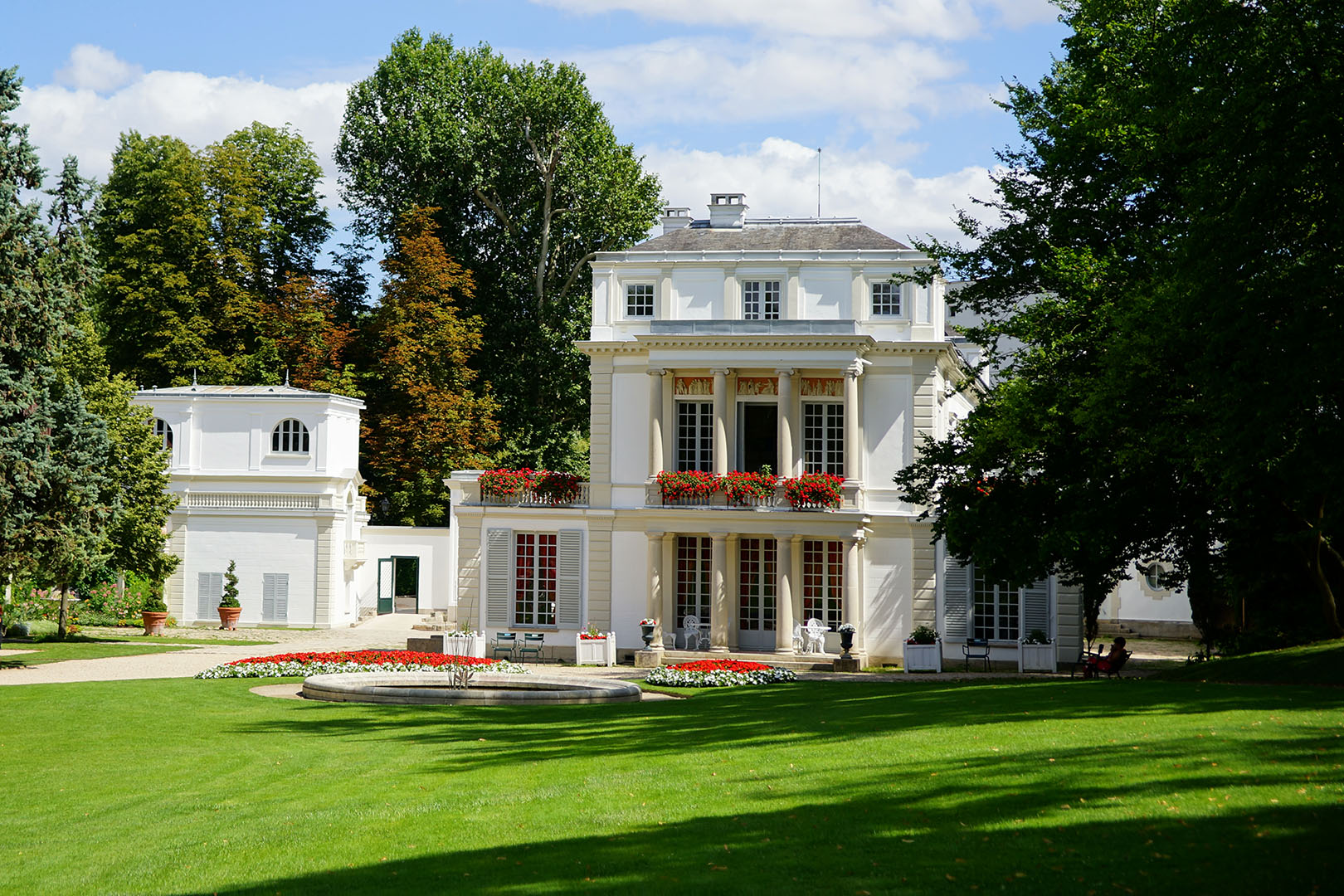Ville de Cagnes sur Mer: Picture perfect
Text: Martin Pilkington | Photos © Ville De Cagnes-Sur-Mer

Dining Room, Musée Renoir, Cagnes-sur-Mer.
The great impressionist painter Renoir spent the last years of his life in Cagnes-sur-Mer. To mark the centenary of his death, the Renoir museum in his home in the Côte d’Azur town is hosting a major exhibition of his work from that period.
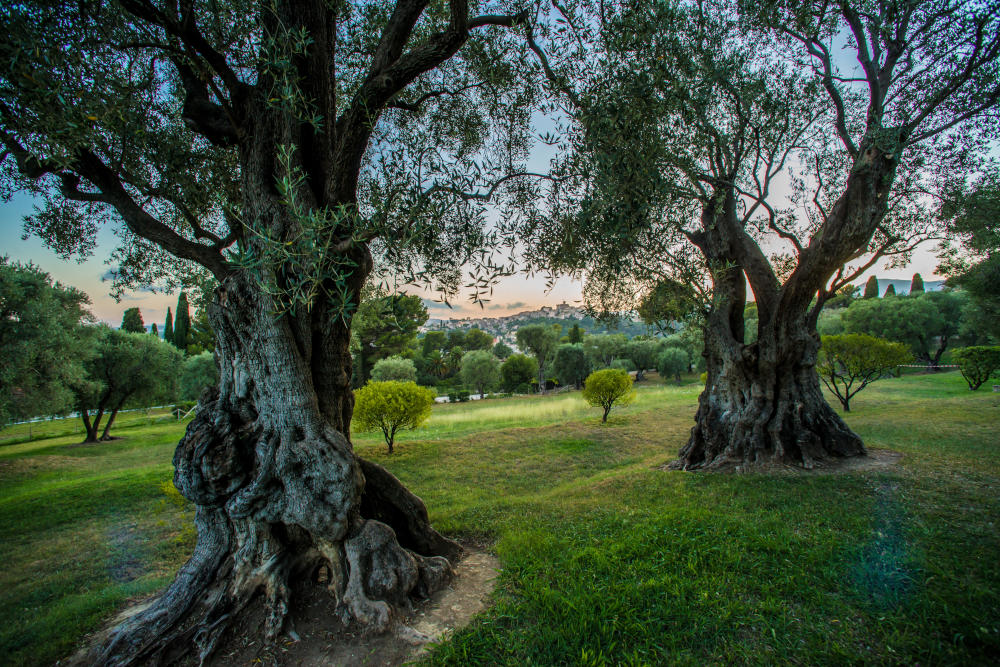
Olive Trees at the Musée Renoir. © Nicolas Chaxel
Renoir moved to Cagnes in 1903, and in 1907 bought the land on which he built himself an elegant home that is now The Musée Renoir. The building sits on the beautiful hillside of Les Collettes in the heart of the Provence countryside, surrounded by Mediterranean gardens and offering a wonderful insight into the artist’s time living there, from 1908 until his death in 1919. It is a vibrant, natural space filled with more than 150 ancient, gnarled olive trees which Renoir adored and went to great lengths to preserve.
“Renoir came to Cagnes partly for the beautiful bright sunlight, for his work,” explains Emeric Pinkowicz, who heads the town’s museums, “but also for the climate, for his health. He suffered terribly with arthritis, and the dry, sunny weather here in the south of France helped him cope with that.”
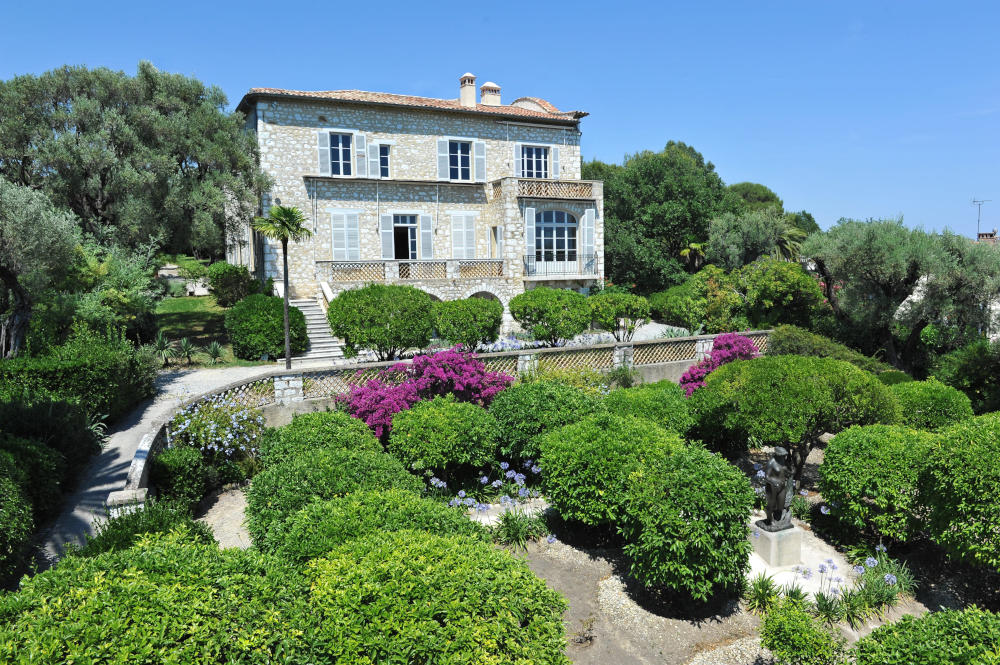
Ville de Cagnes-sur-Mer. Maison, southern façade. Photos: © Service communication
Renoir’s portraits and painting at Les Collettes
Renoir’s time at Les Collettes was an important one in terms of his work there. In the later years of his career, Renoir had nothing left to prove as he had already made his fortune through commissions painting Paris’ rich and famous. So, by this time, he was at last able to choose what he wanted to paint himself. “His subjects were chosen because he had some emotional attachment to them, maybe friends visiting, or a woman, so they are more intimate, more spontaneous than his earlier work,” says Pinkowicz.
A new exhibition running at the museum from 15 June to 22 September will focus on the portraits he painted during this period. This was an especially creative period in Renoir’s life, and in addition to the permanent collection, the exhibition also includes the magnificent portrait Gabrielle à la Rose – on special loan from the Musée d’Orsay in Paris. There will also be photographs and archive material.
During Renoir’s later years, he also spent time focusing on sculpture. “Sculpture became increasingly important to Renoir at the end of his life and career,” says Pinkowicz, “a field in which Renoir, severely hampered by his rheumatoid arthritis, was assisted by the young Catalan artist Richard Guino, which proved a very successful collaboration. One of the best examples of their work together is the bronze statue of Venus Victrix, in the gardens.”
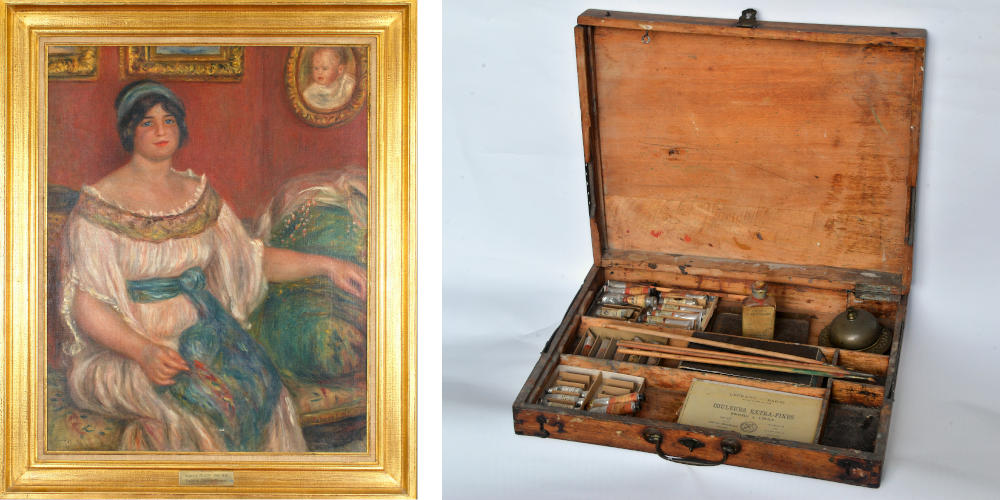
Left: Pierre-Auguste Renoir, Madame Colonna Romano, 1910, Musée d’Orsay collection, MNR* 204. Photo: © Bernard Olives. | Right: Renoir’s paintbox. Photo: © Nicolas Chaxel.
The house – rescued and lovingly restored
After Renoir’s death, the house was home to one of Renoir’s sons for many years, but by the time the local authority purchased it in 1960, it had changed considerably. Decades later, the local council came to the rescue and, between 2012 and 2013, major sums were invested in a lengthy programme of careful refurbishment, in order to restore the artist’s workshop to its former glory. “There are pieces of furniture, and settings like the dining room, along with some very personal objects like his cane,” says Pinkowicz, “his paint box and a beloved cup and ball toy, that give visitors a real feel of his time here.”
The house and gardens now provide a vivid insight into Renoir’s day to day life, his home and his work amidst one of the most beautiful parts of the Provencal countryside. Combined with the painter’s beautifully preserved gardens, there is a wonderful sense of the impressionist experience.
“A visit to the house and the gardens,” says Pinkowicz, “is both cultural and sensory, and it opens the door to a very important period in Renoir’s life.”
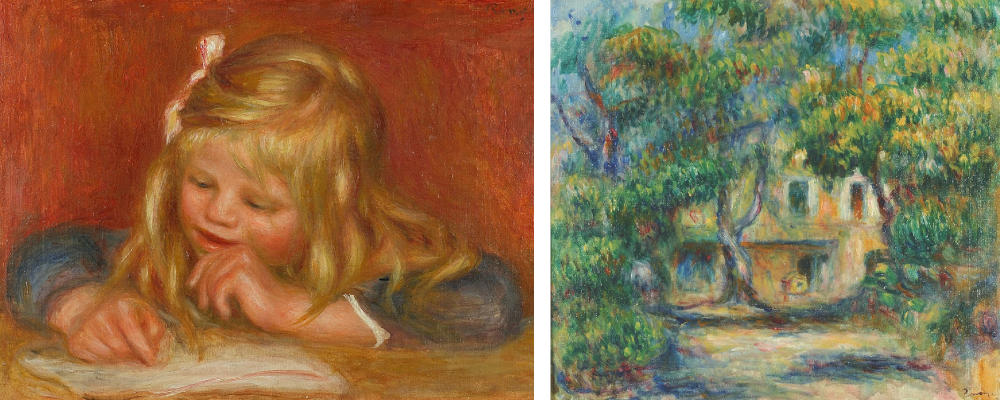
Left: Pierre-Auguste Renoir, Coco reading, 1905, Musée d’Orsay, MNR* 1004. Photo: © Bernard Olives.| Right: Pierre-Auguste Renoir, La Ferme des Collettes, détail, 1915, musée Renoir, Cagnes-sur-Mer. Photo: © Bernard Olives.
*MNR: works recovered after the Second World War and currently with Musées Nationaux (French National Museums) awaiting confirmation of ownership.
www.cagnes-sur-mer.fr/2019-annee-renoir www.cagnes-tourisme.com/fr/decouvrir/musee-renoir The Musée Renoir is open: June to September, 10am to 1pm and 2pm to 6pm (gardens open 10am to 6pm) October to March, 10am to 12pm and 2pm to 5pm April and May, 10am to 12pm and 2pm to 6pm Closed Tuesdays and 25 December, 1 January and 1 May 19 Chemin des Collettes, 06800 Cagnes-sur-Mer, France
Subscribe to Our Newsletter
Receive our monthly newsletter by email




